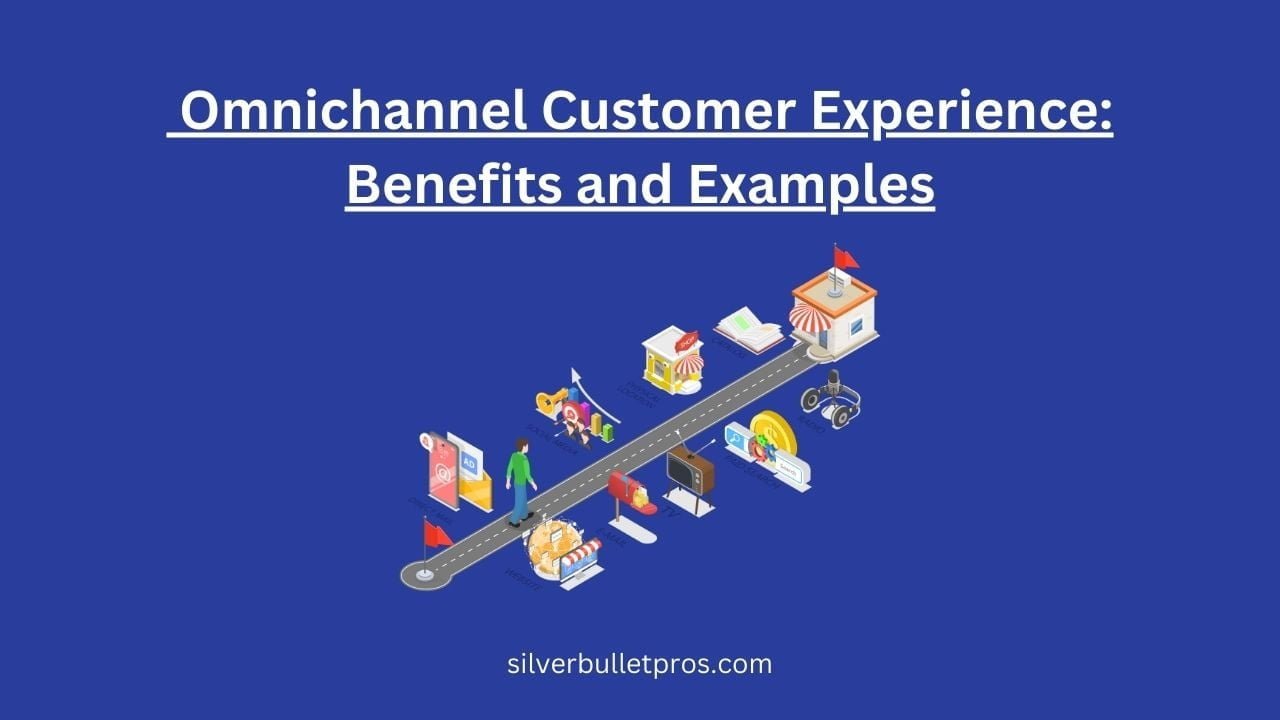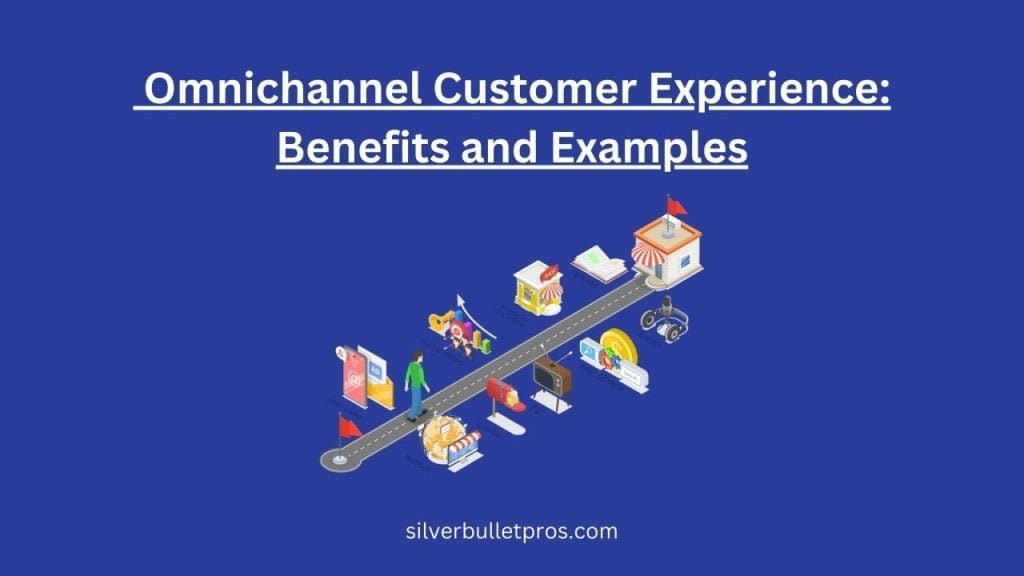

An omnichannel customer experience is a multi-channel approach to marketing, selling, and serving customers that creates a seamless and integrated customer experience, regardless of how or where a customer reaches out. This involves the integration of physical stores, e-commerce platforms, mobile apps, social media, and more.
An omnichannel customer experience provides numerous benefits including a consistent brand experience, personalized interactions, improved customer satisfaction, increased sales and revenue, reduced costs, better customer insights, and streamlined operations. This comprehensive guide explores these benefits in detail and provides real-world examples of successful omnichannel strategies.
1. Consistent Brand Experience
A consistent brand experience ensures customers receive the same quality and message across all channels.
Having a consistent brand experience means that whether a customer interacts with your business online, via a mobile app, or in-store, they will encounter the same messaging, visual identity, and service quality. This consistency builds trust and reinforces brand identity, making customers feel more comfortable and loyal.
For example, a clothing retailer like Zara ensures that the look and feel of their website, mobile app, and physical stores are uniform. This consistency helps customers easily recognize and trust the brand, regardless of where they shop.
2. Personalization
Personalization tailors the customer experience to individual preferences and behaviors.
Personalization in an omnichannel strategy involves using data from various channels to create a unique experience for each customer. This might include personalized recommendations, targeted promotions, and customized communication.
For instance, Amazon uses customer data to recommend products based on past purchases and browsing history. This personalized approach enhances the shopping experience and encourages repeat business.
3. Improved Customer Satisfaction
Improved customer satisfaction results from meeting customer needs efficiently and effectively.
When customers receive consistent and personalized service across all channels, their overall satisfaction increases. Satisfied customers are more likely to return and recommend the brand to others.
According to a study by PWC, 73% of consumers cite customer experience as an important factor in their purchasing decisions. Brands like Starbucks have excelled in creating a satisfying omnichannel experience by integrating their mobile app with their in-store service, allowing customers to order ahead and skip the line.
4. Increased Sales and Revenue
Increased sales and revenue come from providing a seamless shopping experience.
An effective omnichannel strategy can significantly boost sales and revenue. Customers are more likely to make purchases when they can move seamlessly between channels without interruption.
For example, Disney's omnichannel approach includes a mobile app that enhances the in-park experience, leading to increased spending on food, merchandise, and attractions. The seamless integration of online and offline experiences drives higher sales.
5. Reduced Costs
Reduced costs are achieved through efficient use of resources and improved customer retention.
An omnichannel strategy can lead to cost savings by streamlining operations and improving customer retention. Happy customers are less likely to return products or require extensive customer service, reducing operational costs.
Retailer Macy's has reduced costs by integrating their inventory systems across online and physical stores. This integration allows them to fulfill online orders from store inventory, reducing shipping costs and improving stock management.
6. Better Customer Insights
Better customer insights are gained from analyzing data across all channels.
An omnichannel approach provides a wealth of data from various touchpoints, allowing businesses to gain deeper insights into customer behavior and preferences. These insights can inform marketing strategies and product development.
Netflix uses data from multiple channels, such as viewing history and search behavior, to understand customer preferences. This data-driven approach helps them create personalized recommendations and content, enhancing the customer experience.
7. Streamlined Operations
Streamlined operations improve efficiency and service delivery.
Integrating different channels and systems can streamline operations, making it easier to manage inventory, process orders, and provide customer support. This integration leads to faster service and fewer errors.
Walmart's omnichannel strategy includes a robust supply chain system that supports both online and offline sales. This integration ensures that products are available when and where customers want them, improving overall efficiency.
What are the Key Components of an Omnichannel Customer Experience?
To build an effective omnichannel customer experience, several key components must be in place:
- Unified Customer Profiles: Consolidating customer data from all channels into a single profile to ensure personalized and consistent interactions.
- Integrated Technology: Using platforms that connect various channels and systems, such as CRM and ERP software.
- Seamless Communication: Ensuring that communication with customers is consistent and continuous across all touchpoints.
- Responsive Design: Creating websites and apps that provide a consistent experience on different devices.
- Data Analytics: Leveraging analytics to understand customer behavior and preferences for better decision-making.
What are the Benefits of an Omnichannel Customer Experience?
The benefits of an omnichannel customer experience are numerous:
- Enhanced Customer Loyalty: Consistent and personalized experiences encourage repeat business.
- Increased Sales: Seamless transitions between channels lead to higher conversion rates.
- Improved Customer Retention: Satisfied customers are more likely to stay with a brand.
- Cost Efficiency: Streamlined operations reduce costs associated with returns and customer service.
- Better Market Understanding: Data from multiple channels provides valuable insights into customer behavior.
What are the Challenges of Implementing an Omnichannel Customer Experience?
Implementing an omnichannel strategy can be challenging due to:
- Data Integration: Consolidating data from different sources into a unified system.
- Technology Investment: Upgrading or acquiring technology to support integration.
- Staff Training: Ensuring employees are trained to provide consistent service across all channels.
- Maintaining Consistency: Keeping brand messaging and service quality uniform across channels.
- Measuring Success: Developing metrics to measure the effectiveness of the omnichannel strategy.
What are the Best Practices for Implementing an Omnichannel Customer Experience?
To successfully implement an omnichannel strategy, follow these best practices:
- Invest in the Right Technology: Use integrated platforms that support seamless communication and data sharing.
- Create Unified Customer Profiles: Consolidate customer data to provide a personalized experience.
- Train Staff: Ensure all employees understand the omnichannel approach and can provide consistent service.
- Monitor and Analyze Data: Continuously analyze customer data to refine and improve the strategy.
- Maintain Consistent Branding: Ensure that all channels reflect the same brand identity and messaging.
What are the Examples of Omnichannel Customer Experience?
Several companies have successfully implemented omnichannel strategies:
- Sephora: Integrates online and in-store experiences with their mobile app, allowing customers to access their Beauty Insider account, book appointments, and receive personalized recommendations.
- Nike: Offers a seamless shopping experience through their website, mobile app, and physical stores, with features like order online and pick up in-store.
- Target: Uses an omnichannel approach to provide a consistent shopping experience across their website, mobile app, and physical stores, including services like same-day delivery and in-store pickup.
What is the Importance of an Omnichannel Customer Experience?
An omnichannel customer experience is crucial for modern businesses as it:
- Meets Customer Expectations: Customers expect seamless and consistent interactions across all channels.
- Enhances Brand Loyalty: Satisfied customers are more likely to return and recommend the brand.
- Boosts Sales and Revenue: A smooth and integrated shopping experience increases the likelihood of purchases.
- Provides Competitive Advantage: Businesses with a strong omnichannel presence stand out in a crowded market.
- Improves Operational Efficiency: Streamlined operations and data integration lead to cost savings and better resource management.
In conclusion, implementing an omnichannel customer experience can significantly benefit businesses by enhancing customer satisfaction, increasing sales, reducing costs, and providing valuable customer insights. By following best practices and leveraging the right technology, companies can create a seamless and personalized experience that meets the needs of today's consumers.
What is an omnichannel customer experience, and how does it differ from multichannel?
An omnichannel customer experience provides a seamless and integrated experience across all channels and touchpoints, allowing customers to move between channels (physical stores, websites, mobile apps, social media, etc.) without disruption. In contrast, a multichannel approach offers multiple channels, but they often operate in silos, leading to inconsistent experiences.
What are the key benefits of implementing an omnichannel strategy for businesses?
Key benefits include improved customer satisfaction and loyalty, better customer insights and personalization, increased operational efficiency, and a competitive advantage. Omnichannel strategies can lead to higher customer retention rates, increased sales, and a stronger brand reputation.
How can companies ensure a seamless and consistent experience across all touchpoints?
Companies can ensure a seamless experience by integrating data and systems across channels, implementing a centralized customer view, using consistent branding and messaging, and providing seamless transitions between channels. Investing in advanced technologies, such as customer relationship management (CRM) systems, and fostering a customer-centric culture are also crucial.
Can you provide examples of companies that have successfully implemented omnichannel strategies?
Examples of companies with successful omnichannel strategies include:
- Starbucks: Seamless integration of physical stores, mobile app, and loyalty program.
- Disney: Consistent experience across theme parks, hotels, cruise lines, and digital platforms.
- Sephora: Integrated in-store, online, and mobile experiences with virtual try-on tools and personalized recommendations.
- Nordstrom: Omnichannel approach with buy online, pick up in-store, and styling services.
What are the challenges businesses may face when transitioning to an omnichannel approach?
Potential challenges include data silos and integration issues, legacy systems and processes, organizational resistance to change, lack of customer-centric culture, high implementation costs, and the need for continuous optimization. Change management, employee training, and effective communication are crucial for a successful transition.